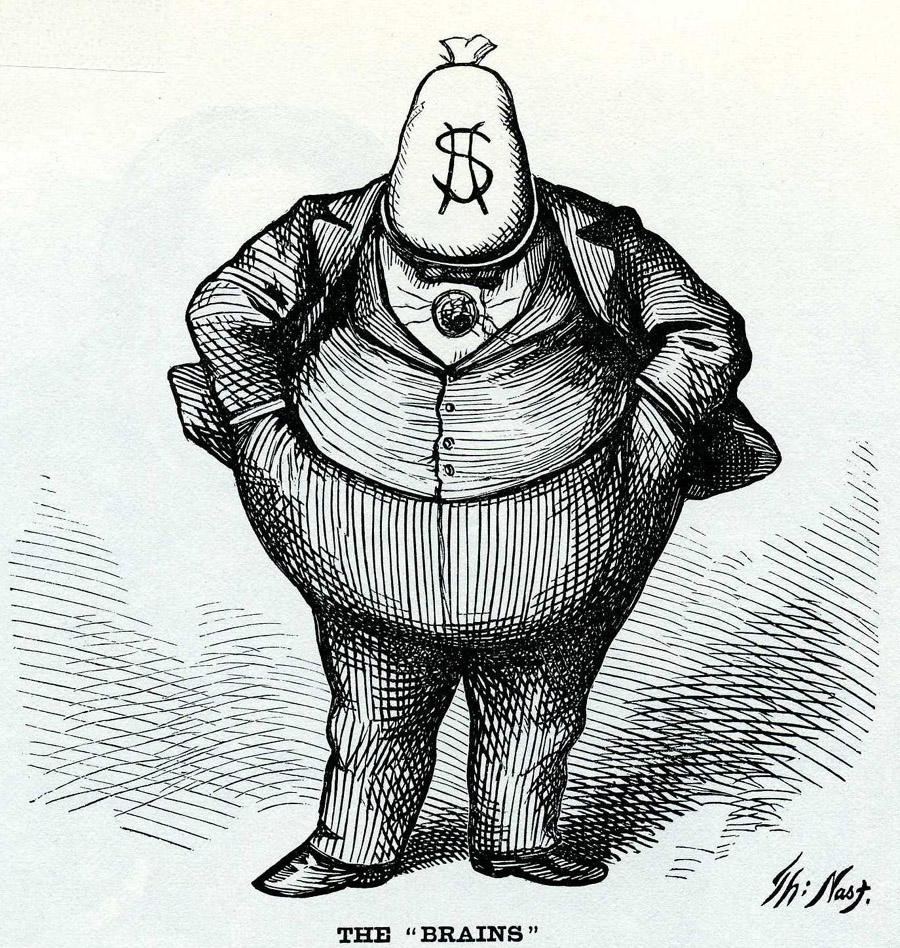This week I decided to look further into both the history of cartoons and the actual process of drawing them. For the former, I discovered an incredibly informative series on YouTube called The Art of the Cartoon. It traces the history of cartoons from prehistoric times to modern day. However, it primarily focuses on post-19th century history, when cartooning flourished due to the print and publishing boom of the late 19th/early 20th centuries. This series covers all genres of cartooning, including political, comic strips, and animation. It also talks about the many ways that cartoons have interacted with history over the decades. My personal favourite anecdote? “Boss” Tweed, the corrupt 19th century New York politician, escaped from jail and fled to Spain in 1875. He was eventually returned to America when Spanish authorities recognized him from Thomas Nast’s famous political cartoons.
After finishing the series, I finally felt like I had a fairly good grasp of the history of cartooning. Therefore, it was time to try and understand the actual process of creating cartoons. As I mentioned last week, I have exactly zero visual arts skills. That’s why I was eager to know more about the technical skills behind cartooning. However, after Googling “How to draw a cartoon” several times over, I realized that this simple question did not have a simple answer. Mostly because, as I soon figured out, there is no one way to draw a cartoon. Every cartoonist has a distinctive style and look of their own. Meaning there is no one size fits all approach to cartooning. However, I did learn a few common techniques.
First and foremost, I learned that you should always start with the panel. The panel is your stage, and therefore you should always work within the parameters of your panel(s). If your cartoon is of the single panel variety, the entire image and message of your cartoon must fit into that space.
Speaking of which, I learned that there are several rules for composition that must be taken into account when creating a cartoon. For example, the positioning of your subjects should be both visually interesting and tell a story. As one article astutely put it, “Formal balance is for statues.” With cartooning, you should aim to make your image as visually dynamic and interesting as possible. You should also avoid tangents, or contact points, where lines of different objects inadvertently touch. This gives them the illusion of being equal distance from the reader, and as such, the perspective can get distorted. Finally, I learned about character and speech bubble placement, and how they have to be arranged in narrative order for the story to be understood. It sounds like common sense, but apparently this is a crucial and often overlooked aspect of cartooning.
Beyond those basic rules, I discovered that drawing a cartoon mostly comes down to choices. How much background should I fill in? Should I use pen-shading or solid black and white objects to fill in the space? How much of the images should I exaggerate for comic effect? And just to be clear. When I say “I”, I mean this in the rhetorical sense. I may now have a lot more knowledge about what it takes to draw a cartoon, but that doesn’t mean I magically have the ability to draw. I can still barely draw stick people, so I will definitely be leaving the cartooning to the experts.
Speaking of the experts. As much as I enjoyed the YouTube series on the history of cartooning, it was deeply disappointing that across four videos, only one woman and three non-North American/European artists were featured. Therefore, for the final week of this topic, I’m going to be searching out prominent cartoonists from around the world. If you know of any I should check out, please let me know. And come back next week to find out what, or rather, who, I discover.
Happy Sunday!
Suggestions for artists I should check out? Please contact me with your ideas. I hope you enjoyed your daily helping of art!



